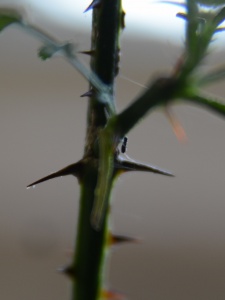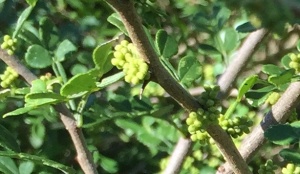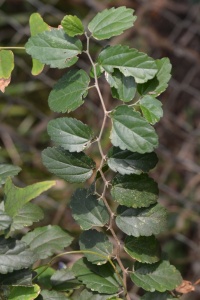Remember! It’s still tree-planting time in the Valley – November through February.
The first criteria for planting anything in my gardens is, “what can it do for me?” Selfish, but payload is important. I want wildlife in my yard but not be a slave to it. Planting what nature wants gives me endless hours of nearly maintenance-free entertainment.
For a variety of birds and butterflies, plant trees, shrubs and flowers that will attract them. If a plant provides dual service, more the better.
Three of my favorite dual-purpose trees are colima, granjeno, Wright’s catclaw.
- Colima, Lime prickly-ash, Zanthoxylum fagara – Citrus Family
- Granjeno, Spiny hackberry, Celtis pallida – Elm Family
- Wright’s catclaw, Uña de Gato, Acacia wrightii – Mimosa Family
Separately, these trees provide great activity for pollinators, birds and other things up and down the food chain.
The flowers are inconspicuous on colima and granjeno but the resultant berries are abundant and great food for birds. Colima has a lovely, lime-green hue and is a larval plant for the giant swallowtail butterfly.

Both colima and granjeno keep their leaves nearly all year. Wright’s catclaw and colima will bloom after rainfall; granjeno generally blooms in spring.
Wright’s catclaw has fragrant, catkin-like flowers which produce smallish, fat, twisty flat pods. The flowers are a superb honey source.
If not my all-time favorite trees, I do have tremendous respect for this versatile trio.
They are heavily armed. Together, they make a great security hedge.

Wright’s catclaw and colima are described as having vicious, re-curved cat-claw-like prickles and thorns, respectively.


If you accidentally walk into colima or Wright’s catclaw, back out of it or you’re going to rip your skin as if a cat were sliding backwards down your arm.

Granjeno has paired thorns on zig-zag branches, so it’s no lightweight in discouraging unwanted intruders.

Propagation is by seed, and with all trees that provide bird food, these three are likely to re-vegetate at random.
All three will grow in partial shade but full sun is better. Growth rate is medium to slow. Granjeno branches do seek the sun and can get unwieldy, travelling vine-like through its neighboring trees.
If it’s security you’re wanting, the traits of this trio are a good thing.
If anyone knows what critters eat Wright’s catclaw pods, please post it in a comment. I’d like to know.

Leave a Reply